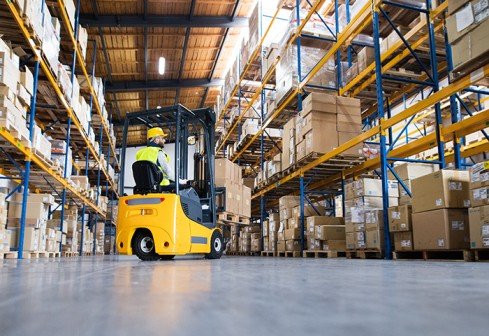
In today’s highly competitive market, the choice of a custom backpack manufacturer can make or break a brand. Finding the right manufacturing partner is much more than just sourcing a vendor; it’s about aligning your brand’s vision, quality expectations, and growth aspirations with a manufacturer that can truly deliver. While the global market teems with opportunities, offering a vast array of manufacturers boasting unique skills and specialties, it also brings to the table a complex web of challenges that businesses need to navigate.
From linguistic barriers to differences in work culture, from varying quality standards to distinct economic conditions, the global landscape can be both an entrepreneur’s dream and a maze. However, with the right approach, companies can harness the global market’s immense potential, ensuring that their backpacks not only stand out in quality and design but also remain competitively priced. As we delve deeper into this topic, we’ll uncover the crucial steps and considerations in your journey to find the ideal custom backpack manufacturer on the global stage.
1. Understanding Your Unique Needs
Before embarking on the quest to find the ideal custom backpack manufacturer, it’s paramount to have a crystal-clear understanding of what you’re looking for. This clarity is achieved by identifying and analyzing your unique needs, ensuring that your subsequent search is targeted and effective.
Recognizing Your Target Audience and Their Preferences
Every brand caters to a specific demographic, each with its unique set of preferences. It’s essential to discern who your target audience is and what they desire in a backpack. Are you catering to the tech-savvy urban commuter who values compartments for gadgets, or the adventurous traveler in search of a durable and spacious bag? Perhaps your audience is school-going children, necessitating vibrant designs and sturdy build. Recognizing your audience’s preferences will shape the design, functionality, and price range of your product, guiding your discussions with potential manufacturers.
Determining the Kind of Customization You Need
Once you have a handle on your audience’s preferences, you can dive into the specifics of your product:
- Materials: Different audiences will have varying expectations when it comes to material. While some might prioritize eco-friendly materials like organic cotton or recycled polyester, others might look for premium leather finishes or water-resistant synthetics.
- Designs: The design encompasses not just the visual appeal of the backpack but also its functionality. Think about the number of compartments, zippers, padding, and other features that your audience might value.
- Sizes: Depending on your target demographic, you might need a range of sizes. For instance, backpacks for professionals might be larger to accommodate laptops, while those for children or day-trippers might be more compact.

2. Evaluating Credibility and Expertise
In the vast landscape of the global marketplace, where manufacturers range from small workshops to large-scale industrial complexes, one of the most pressing challenges faced by brands is discerning the genuine from the disreputable. A manufacturer’s credibility and expertise don’t just influence the quality of the product but also impact the smoothness of the entire collaboration. Here’s a guide to ensuring that the manufacturer you’re considering is both credible and well-equipped for your needs:
Checking for Business Certifications and Industry Affiliations
Certifications act as badges of validation, ensuring that the manufacturer meets specific standards set by authoritative bodies:
- Quality Certifications: ISO (International Organization for Standardization) certifications, like ISO 9001, signify that the manufacturer adheres to international quality management standards.
- Eco-friendly and Ethical Practices: Certifications like OEKO-TEX or Fair Trade indicate a commitment to sustainable and ethical manufacturing processes.
- Industry Affiliations: Being part of recognized industry associations suggests that the manufacturer is actively engaged with the latest industry trends, standards, and best practices.
Analyzing Past Client Testimonials and Reviews
Testimonials offer a window into the manufacturer’s past collaborations:
- Client Satisfaction: Positive feedback from previous clients can be a reassuring indicator of the manufacturer’s reliability and quality of work.
- Constructive Criticisms: Even the best manufacturers can have areas of improvement. Look out for recurring criticisms or issues mentioned by multiple clients.
- Online Review Platforms: Apart from the manufacturer’s website, platforms like Google Reviews or industry-specific forums can provide unbiased client feedback.
Importance of Years in Business and Past Projects
Duration and experience in the industry often correlate with expertise and stability:
- Established Presence: Manufacturers that have been in the industry for many years are likely to have weathered challenges and adapted to various market shifts, showcasing resilience.
- Diverse Portfolio: Examine their past projects. A diverse portfolio indicates versatility and the manufacturer’s ability to cater to different customization needs.
- Consistent Growth: While not a definitive metric, manufacturers who’ve expanded over the years—either in terms of facilities, workforce, or technology—often reflect a trend of consistent quality and business success.

3. The Cost Factor: Balancing Quality and Affordability
In the quest for the ideal custom backpack manufacturer, cost invariably stands out as one of the most significant considerations for brands. While staying within budgetary constraints is crucial, it’s equally important to ensure that the cost-saving measures don’t come at the expense of product quality or long-term brand reputation. Here’s how businesses can strike the right balance between quality and affordability when engaging with global manufacturers:
Understanding the Cost Structure of Global Manufacturers
A comprehensive understanding of how manufacturers price their services can empower businesses to make informed decisions:
- Labor Costs: These vary significantly from region to region. While some countries offer competitive labor rates, it’s essential to ensure that lower labor costs aren’t a result of compromised workers’ rights.
- Material Costs: Depending on the backpack’s specifications, the cost of raw materials can be a major component. It’s essential to understand the source and quality of these materials.
- Operational Overheads: This encompasses the manufacturer’s expenses related to machinery maintenance, utilities, rent, and other fixed costs.
- Profit Margins: Like any business, manufacturers factor in a profit margin. It’s essential to understand what this margin is and how it compares to industry standards.
The Hidden Costs: Shipping, Tariffs, and Customs
Navigating the global marketplace often brings with it several costs that might not be immediately apparent:
- Shipping Fees: Depending on the distance, mode of transportation, and order volume, shipping fees can significantly impact the overall cost.
- Customs and Tariffs: Importing products often incur duties and taxes. It’s crucial to research the tariffs associated with importing backpacks from the manufacturer’s country to your own.
- Delays: Delays in shipping or customs can lead to holding costs and potential lost sales, especially if there’s a tight product launch schedule.
Prioritizing Quality Over Merely Looking for the Cheapest Option
While cost-saving is essential, the cheapest manufacturing option might not always be the best:
- Long-Term Brand Reputation: A subpar product can damage a brand’s reputation, leading to loss of customer trust and potential future sales.
- Warranty and Returns: Products of lower quality can lead to increased warranty claims and returns, incurring additional costs.
- Repeat Business: Establishing a relationship with a manufacturer based on trust and mutual growth often leads to better deals and terms in the long run. Prioritizing short-term savings might jeopardize such potential long-term relationships.

4. Sampling and Prototyping
In the realm of custom manufacturing, particularly when navigating the intricate terrains of global markets, sampling and prototyping serve as pivotal stages. They act as tangible representations of your vision and offer a preliminary glimpse into what the end product might look like. This crucial phase not only aids in ensuring quality but also fosters clearer communication and understanding between brands and manufacturers.
Why It’s Essential to Get Samples Before Bulk Ordering
- Risk Mitigation: Ordering in bulk without first evaluating a sample can be a gamble. Samples help in identifying potential issues before they escalate into large-scale production.
- Clarified Expectations: Samples provide a physical point of reference, reducing ambiguities and ensuring both the brand and manufacturer are aligned in their expectations.
- Financial Prudence: Addressing and rectifying mistakes in a sample is significantly less expensive than modifying or returning a bulk order.
Evaluating the Quality, Design, and Durability Through Prototypes
- Quality Check: The prototype allows for a hands-on quality assessment, from the choice of materials to the craftsmanship involved.
- Design Validation: Beyond just the aesthetic appeal, the prototype can be tested for functional design aspects like ergonomics, weight distribution, and storage capabilities.
- Durability Testing: For products like backpacks, endurance is paramount. Prototypes can be subjected to wear-and-tear tests to ascertain their longevity and resilience.
Iterating Based on Feedback and Refining the Final Product
- Feedback Loop: Once the prototype is evaluated, feedback can be collated and shared with the manufacturer. This iterative process ensures that the product evolves to meet the brand’s specifications and standards.
- Modifications: Changes, whether minor tweaks or significant redesigns, can be implemented based on the feedback received from the prototype’s evaluation.
- Final Approval: Post iterations, a final sample can be produced for approval, ensuring that the end product mirrors the brand’s vision and meets the desired quality benchmarks.

5. Logistics and Delivery
In the intricate dance of global manufacturing, while the creation of a product is a monumental task in itself, ensuring its timely and safe delivery is equally crucial. Logistics and delivery are the unsung heroes of the manufacturing world, playing a pivotal role in bridging the gap between manufacturers and customers. Let’s delve into the significance of this phase and the intricacies involved.
Planning for Potential Shipping and Customs Delays
- Researching Trade Regulations: Different countries have distinct regulations and requirements. Being well-informed about these can help preempt potential hold-ups.
- Seasonal Delays: Times like the Chinese New Year or major global holidays can impact shipping timelines. Planning around these can help avoid unexpected delays.
- Customs Clearance: Every country has its customs clearance process. Familiarizing oneself with the process and ensuring all paperwork is in order can expedite the process.
Ensuring Packaging Meets Your Requirements
- Protection During Transit: The packaging should be robust enough to protect the product from potential damages during shipping, be it from rough handling or environmental factors.
- Branding: For many brands, packaging is also a marketing tool. Ensuring that the packaging reflects the brand’s image and values is vital.
- Eco-Friendly Options: With growing awareness about sustainability, opting for eco-friendly packaging can resonate with environmentally conscious customers and reduce the carbon footprint.
Importance of Clear Agreements on Delivery Timelines
- Contractual Clarity: Clearly defined delivery dates in agreements ensure that both parties are on the same page, reducing the chances of misunderstandings.
- Buffer Periods: It’s prudent to factor in a buffer period, especially when working with tight launch schedules. This ensures that even if minor delays occur, the broader timeline remains unaffected.
- Penalty Clauses: While it’s hoped they never have to be invoked, having clauses that address potential delays or breaches can offer a safety net and ensure accountability.

6. Building Long-Term Relationships
In the world of custom manufacturing, while the allure of short-term gains can often be tempting, the real treasures lie in cultivating long-term relationships. These relationships, built on trust, understanding, and mutual growth, not only lead to better products but also streamline processes and foster a synergy that’s hard to replicate. Let’s delve into the nuances of nurturing these lasting partnerships with manufacturers.
The Value of Fostering a Long-Term Partnership with a Manufacturer
- Consistent Quality: With a deep understanding of your brand’s standards and expectations, a long-term manufacturer can ensure consistent quality across batches and products.
- Efficiency in Production: Over time, as manufacturers become familiar with your product lines and requirements, the production process can be optimized, leading to faster turnaround times.
- Cost Benefits: Long-term partnerships often lead to better pricing, bulk discounts, or favorable terms, as the manufacturer values consistent business and potential for future projects.
Regularly Reviewing and Assessing the Partnership’s Success
- Feedback Sessions: Regular check-ins and feedback sessions can help identify areas of improvement, celebrate successes, and address any concerns.
- Performance Metrics: Having clear metrics, be it related to product quality, delivery times, or responsiveness, can offer an objective measure of the partnership’s success.
- Evolution Over Time: As your brand grows and evolves, ensuring that the manufacturer is still aligned with your vision and can cater to your expanding needs is crucial.

7. Conclusion
From understanding the nuances of your unique needs to the nitty-gritty of logistics, from the importance of sampling to the essence of building enduring partnerships, every step is a lesson in precision, patience, and persistence. Yet, it’s these very challenges that also make the journey rewarding. When brands take the time to research, establish clear communication, prioritize quality, and build trust-based relationships, the results are transformative. Not only do they culminate in superior products that resonate with customers, but they also lay the foundation for sustainable growth and lasting success. As we’ve journeyed through these facets of manufacturing, one thing stands clear: success in the global market isn’t just about finding a manufacturer but forging a partnership. A partnership that thrives on mutual respect, shared visions, and an unyielding commitment to excellence.
In today’s dynamic market, where customization is key and quality is paramount, finding a dependable partner can be the difference between success and setback. We proudly introduce you to Airscape Textile. At Airscape, we believe in more than just producing backpacks; we craft experiences. Each backpack is a testament to our commitment to quality, our attention to detail, and our unwavering dedication to meeting the unique needs of our partners. Our expertise in the industry, combined with state-of-the-art manufacturing facilities, ensures that we deliver not just a product, but a promise of excellence.
Our invitation is straightforward: If you’re looking to elevate your brand, enhance your product offerings, and engage with a partner who genuinely understands the nuances of backpack manufacturing, Airscape is your destination. Contact us now by filling out the form on this page or just click here.

